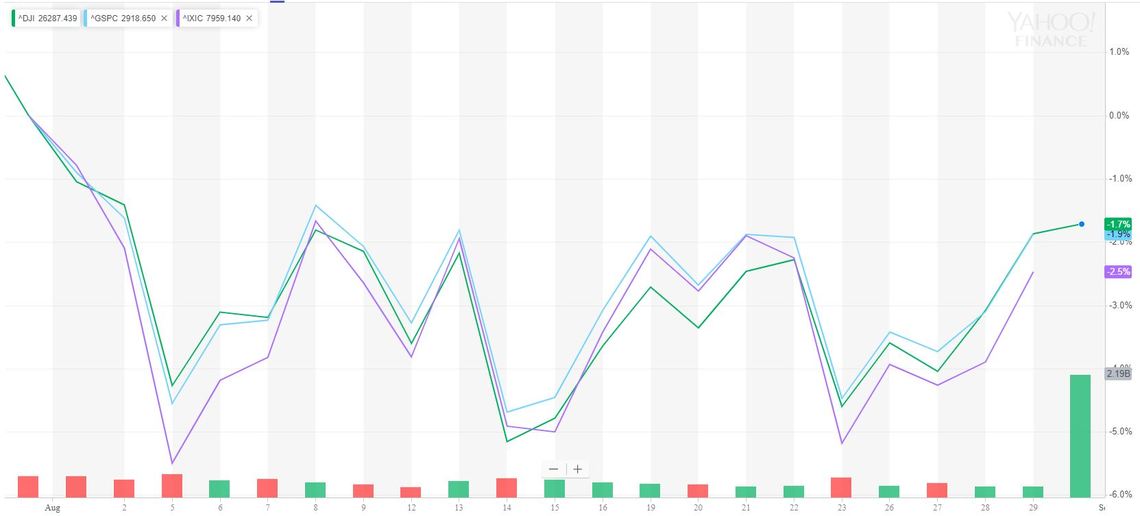100-Year Stock Market Trend Spells Trouble for the Dow

A 100-year stock market trend portends that the Dow will suffer a dismal September. However, history also suggests bulls should buy the dip. | Source: Drew Angerer / Getty Images / AFP
As the stock market looks to shrug off an extremely volatile August, bulls will be praying that JP Morgan is right in its bet that September will herald a strong Dow recovery.
Unfortunately, 100 years of historical data suggests that September is usually bad news for markets, particularly for the Dow Jones Industrial Average.
The Dow Jones Absolutely Loathes September
As this tweet from Fundstrat Managing Director Vito J. Racanelli demonstrates, it doesn’t matter if you look at the Dow’s September returns over the last 100 years or the last 20 – it is typically a bearish month for the index.
In fact, September is the only month the Dow has averaged declines over the past century.
Naturally, there is a great deal of stock market correlation between all major Wall Street indices, so this isn’t great news for the Nasdaq or S&P 500 either.
History Says Q4 Will Offer Seasonal Support for the Stock Market
August is usually the month that Wall Street tells you to disregard.
Many traders take the summer off, meaning that false signals in low volume and breakneck volatility are normal . For this reason, credence will be given to the performance of the stock market in September and through to the Christmas period.

Given the recent escalation in the US-China trade war, September may bring a much clearer picture of how traders view the imposition of fresh tariffs.
On the one hand, investors may have been absorbing a lot of bad news on vacation and are returning with a negative outlook, ready to short everything in sight. Alternatively, better volumes may encourage a strong contingent of bulls to buy the dip with more confidence.
These two conflicting outlooks will certainly boost liquidity, which suggests a marginal positive for the stock market.
Adding to the brighter outlook is that beyond September, the next few months are typically positive for the Dow Jones – as Fundstrat’s Racanelli stated in another tweet:
“Looking on the bright side, once September ends, we enter what has historically been the best three-month stretch of the year from October through December. Over the last 20 years, the Dow has averaged gains of more than 1% during all three months. Can’t wait.”
As every prospectus warns, past performance is no indicator of future results. But hedge funds do pay a great deal of attention to seasonal trends.
Historical data may be a useful way to find comfort amidst the new normal of violent, event-driven volatility in the Trump era.